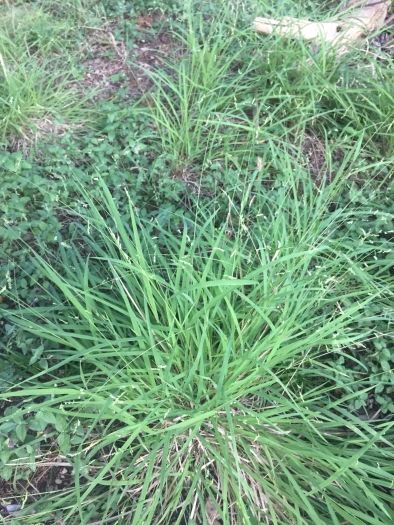Bunch Cutgrass
(Leersia monandra)
Bunch Cutgrass (Leersia monandra)
/
/

Sam Kieschnick
CC BY 4.0
Image By:
Sam Kieschnick
Recorded By:
Copyright:
CC BY 4.0
Copyright Notice:
Photo by: Sam Kieschnick | License Type: CC BY 4.0 | License URL: http://creativecommons.org/licenses/by/4.0/ | Rights Holder: Sam Kieschnick | Publisher: iNaturalist | Date Created: 2017-09-21T13:03:44Z |














Estimated Native Range
Climate Requirements for Myrtle Beach, South Carolina
| This Plant | Your Site | Plant Suitability for Your Location | ||
|---|---|---|---|---|
| • Precipitation | 31" - 37" | 53" | Aquatic | Aquatic |
| • High Temp. | 84°F - 96°F | 90°F | Your summer temperatures are normal for this plant. | Excellent |
| • Low Temp. | 38°F - 60°F | 36°F | Your winter temperatures are normal for this plant | Excellent |
This plant may not grow well at your location - your precipitation is too high.
Summary
Leersia monandra, commonly known as Bunch Cutgrass, Monandra Grass, Creeping Rice, or Monandra Cutgrass, is a perennial grass that thrives in wetland habitats such as marshes, swamps, riverbanks, and moist open woodlands. It is native to the Southeastern United States, the Caribbean, and Central and South America. This grass typically reaches a height of 1-2 feet (0.3-0.6 meters) and has a spreading habit that can form dense mats. The flowers of Leersia monandra are green and inconspicuous, blooming in the summer and fall, and are not the main attraction of this plant.
Bunch Cutgrass is valued for its ability to stabilize soil in wet areas, making it useful for erosion control and restoration projects. It is also used in rain gardens and as a ground cover in moist, shaded areas. In cultivation, it prefers part shade to full shade and grows best in slow-draining clay or loam soils with low water requirements once established. While it is not a showy ornamental grass, its utility in challenging wetland conditions makes it a practical choice for certain landscaping needs. Gardeners should be aware that in some conditions, it can spread aggressively and may require management to keep it in check.CC BY-SA 4.0
Bunch Cutgrass is valued for its ability to stabilize soil in wet areas, making it useful for erosion control and restoration projects. It is also used in rain gardens and as a ground cover in moist, shaded areas. In cultivation, it prefers part shade to full shade and grows best in slow-draining clay or loam soils with low water requirements once established. While it is not a showy ornamental grass, its utility in challenging wetland conditions makes it a practical choice for certain landscaping needs. Gardeners should be aware that in some conditions, it can spread aggressively and may require management to keep it in check.CC BY-SA 4.0
Plant Description
- Plant Type: Grass
- Height: 1-2 feet
- Width: 2-3 feet
- Growth Rate: Moderate
- Flower Color: N/A
- Flowering Season: Summer, Fall
- Leaf Retention: Deciduous
Growth Requirements
- Sun: Part Shade, Full Shade
- Water: Medium, High
- Drainage: Slow, Standing
Common Uses
Erosion Control
Natural Habitat
Wetland habitats such as marshes, swamps, riverbanks, and moist open woodlands
Other Names
Common Names: Monandra Grass, Creeping Rice, Monandra Cutgrass
Scientific Names: Leersia monandra, Asprella monandra, Asprella monandra, Homalocenchrus monandrus, Leersia aspera, Leersia aspera, Leersia aspera, Oryza monandra, Oryza monandra var. monandra
GBIF Accepted Name: Leersia monandra